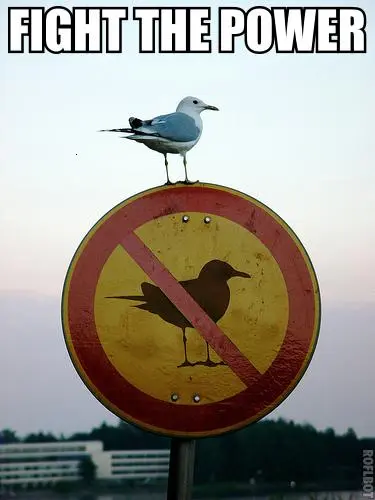

This is only partially true. Very early on, this was the case - Chinese characters started as pictograms representing objects and concepts. But this was fairly limiting in how much complexity you could capture without creating an unmanageably large set of unique pictograms. So the system evolved to use compound characters (characters made up of 2 or more components) incorporating phonetic (i.e. pronunciation) information into the writing system.
Most Chinese characters used in past 2000 years are made up of parts related to their meaning or category of meaning, and parts related to the pronunciation of the spoken word they represent (at least at some point in time, typically in Old Chinese) - these are called phono-semantic compound characters. The first comprehensive dictionary of Chinese characters that was created almost 2000 years ago already classified over 80% of all characters as phono-semantic compounds. This percentage also went up over time in later dictionaries as new compound characters were still being added.
As an example the character for book (書) - is made up of 2 parts, the semantic part is 聿 (brush - in its original form a literal picture of a hand holding a brush) on top (so the word is related to writing or painting), and 者 on the bottom (the meaning of 者 is not important here (it was a picture of a mouth eating sugarcane originally, but lost this meaning long time ago), but 者 in Old Chinese was pronounced similar to the Old Chinese spoken word for book, so it serves a purely phonetic function here)
When Chinese writing was adopted in Japan, it wasn’t really used to write Japanese - it was used to write Classical Chinese. Literate people would translate from Japanese to Chinese (which they would have been fluent in) and write it down in Classical Chinese grammar and vocabulary, not spoken Japanese grammar. They could also read it back and translate on the fly into spoken Japanese for Japanese speaking audience. They also brought in the Chinese pronunciation of the Characters into Japanese (in fact several different versions of this over time - see Go-on, Kan-on, etc.) so the phonetic hints in the characters were still useful when learning the system.
Attempting to write spoken Japanese using Chinese characters was difficult, initially they would actually use Chinese characters stripped of their meaning to represent Japanese syllables. These were later simplified to become modern kana
Spoken Chinese itself evolved beyond the monosyllabic written Classical Chinese (which remained quite rigid), so for a long time, Chinese also wrote essentially in a different language from how they spoke. It was only fairly recently that vernacular Chinese began to be written (rather than Classical Chinese) with it’s polysyllabic words (most words in modern Chinese have 2 or more syllables, and require 2 or more characters to write, further distancing modern words from the original simple pictogram meanings)
So while the idea of some kind of universal abstract concept representation divorced from phonetics sounds intriguing, in practice it is a poor way to capture the complexity and nuance of spoken languages, and all languages (including Chinese) that attempted to adopt it ended up having to build various phonetic hints and workarounds to make the system actually useful and practical for writing.







You can keep a short position for a long time, as long as you can maintain margin, which gets bigger if the stock price continues increasing, and pay margin interest - there is no set date when the short has to he closed, it’s indefinite. Sometimes the lender who loaned you the stock can ask for it back, and if you can’t locate any more shares to borrow to replace the returned shares, you might be forced to buy the shares back and close the short, but this is not common, at least during normal market conditions.